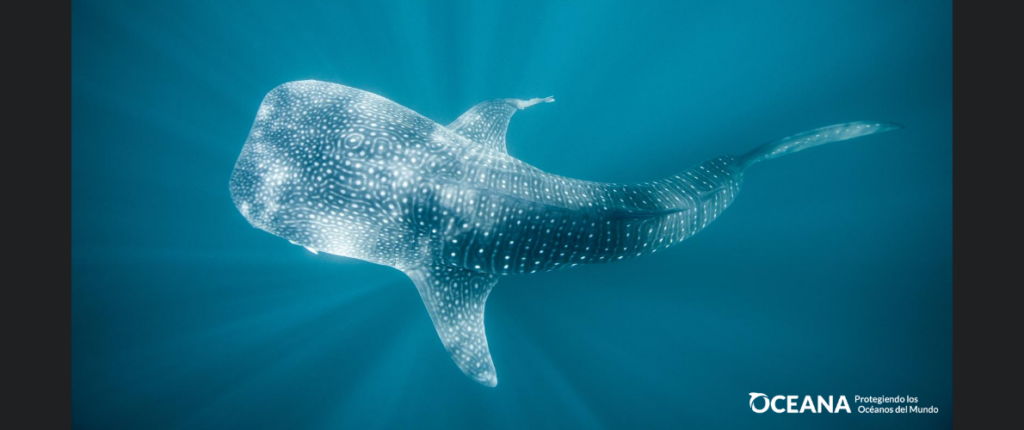
The whale shark (Rhincodon typus), an endangered species, could be consuming plastics and swimming among insecticides in one of the few places where they come to feed each year: Bahía de La Paz, in Baja California Sur.
During January and February 2014, nine researchers carried out the first ecotoxicological study (analysis of the effect of pollutants on species and ecosystems) in Mexico of this species, using biopsies of its skin. Their findings are a red flag.
According to this study, which used a theoretical model based on the number of microplastics found and the flow of the water, the whale sharks of Bahía de La Paz could be consuming up to 171 units of microplastic every day. Worse still, 0.07 units of microplastic per cubic meter were found in the area; polyethylene being the most abundant (35%). The chemical with the highest presence was polychlorinated biphenyls (PCBs).
The whale shark feeds by filtering the water from the surface, opening its mouth to 85% of its capacity. They spend an average of 7.5 hours a day feeding on plankton and it is during this process that they can eat floating pollutants, including plastics.
Pollution in the sea is a serious problem. The presence and distribution of plastic waste in the sea has been widely documented. It has been estimated that, of the 275 million tons of plastics produced by 192 coastal countries in 2010, between 4.8 and 12.7 million tons ended up in the ocean.
This contamination is also a major problem in Mexico. La Paz is one of the most populated coastal cities on the Gulf of California. Boat traffic has increased in one of the areas known for the hundreds of whale sharks that come to feed each year.
In total, this species spends about 135 days of the year feeding in the bay and 38% of them return in the following years. There are only 30 places in the world with this privilege, in Mexico there are three and now there is evidence that in at least one of them, this species lives with the threat posed by plastic pollution.
In Bahía de La de Paz the whale shark has become one of the great tourist attractions , this increases the number of operators, boats, visitors, hotels, etc. And consequently the level of marine pollution also increases. The researchers suggest that it is this growth in human activities that has caused pesticides to reach our oceans. In addition, there is photographic evidence of this species consuming larger plastic particles (macroplastics).
In the 1990s, the whale shark population decreased dramatically and in 2000 it was recognized as a vulnerable species on the IUCN Red List. In 2006 it was recategorized to a more serious level: endangered. Its vulnerability lies in its slow growth, which takes a long time to reach sexual maturity and when it reproduces few young survive.
In addition to these conditions typical of the species, human activity has aggravated its current state. The main threats to this species are direct and incidental catches, boat strikes, inappropriate tourism and climate change.
For this study, samples were taken from the skin of 12 sharks and from the water in the area. An unusual level of PBDE-209 was found in the skin of the studied specimens, a substance contained in plastic products and that is very rare to find in marine food chains. Therefore, it follows that it has reached the skin of these animals because they consumed plastic.
Very little is known about the effect this may have on the health of whale sharks, but there are cases that should alarm us. In 2007, in Thailand, fishermen brought the body of a 5.5-meter female to shore. At necropsy, internal bleeding, ulcers, and a rigid plastic straw were found inside the gastrointestinal tract. The hardness of the straw caused a chemical reaction with the enzymes in the stomach. Not finding damage to other organs, it is suspected that the cause of his death was that straw that should never have reached the sea.
Bahía de La Paz is a fundamental place for the life of this species, which has also become a trigger for the local economy. Taking care of these seas and these sharks is our obligation and another way of taking care of ourselves.
If you want to know more about this species, do not miss Marine Frequency, where we speak with two great specialists in its conservation.